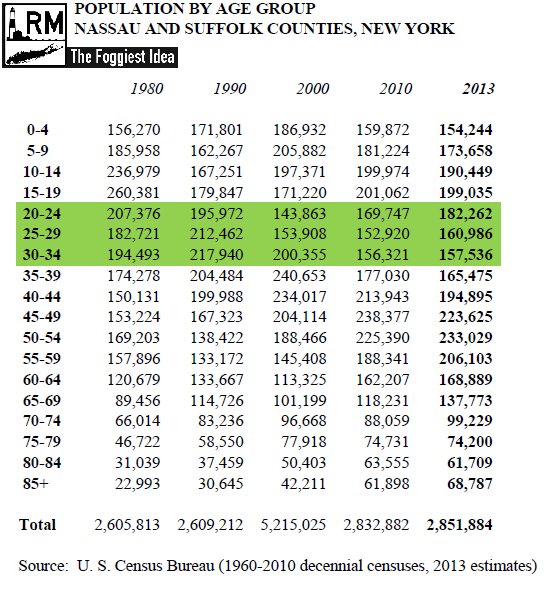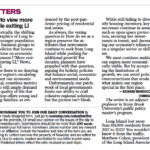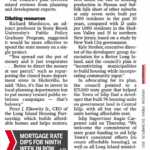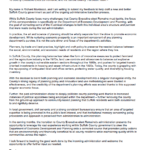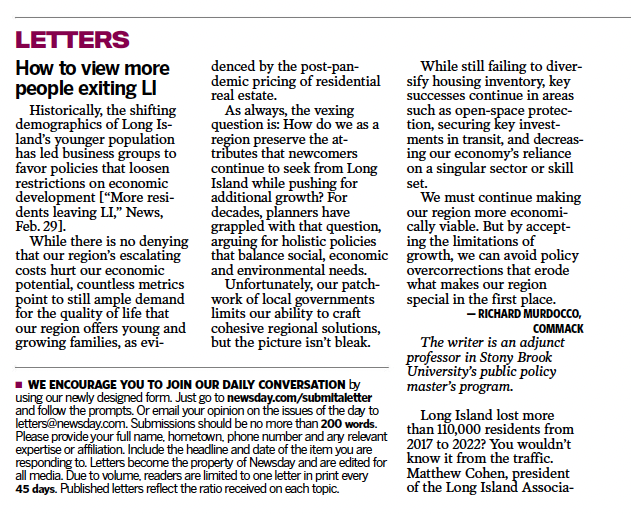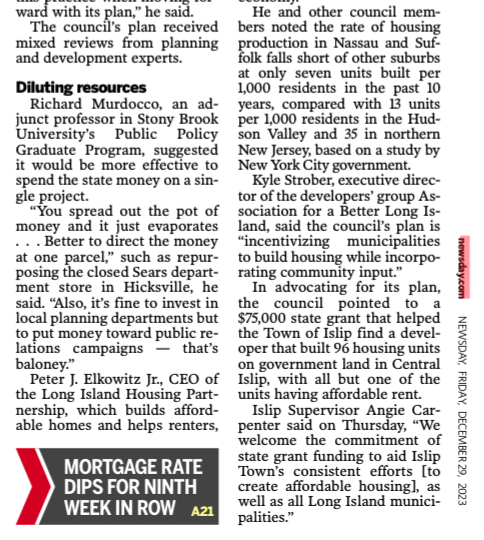As my friend Jim Russell, a demographer who writes for Pacific Standard Magazine would say, it seems that Long Island is dying…yet again.
A new survey, conducted by Jeffery Guillot’s Suburban Millennial Institute has shown that 64% of young adult Long Islanders are looking to stay on Long Island, while 30% say that they may leave.
The Suburban Millennial Institute sells itself as a “non-partisan think tank” that is “dedicated to finding solutions to make Long Island attractive to Millennials”. In this pursuit of studying trends that pertain to the region’s young professionals, they conducted an online survey of 752 Long Islanders who are aged 18 to 36. So, breaking down their findings:
64%, or 481 people surveyed, will stay.
30%, or 226 people surveyed, may leave.
Are 234 people who may (and emphasis on may) leave enough to shift our development priorities, pushing for high density, multi-family units, creating more higher-density sprawl and threatening the safety and quality of our drinking water and integrity of our already-overtaxed roadways?
No.
The survey, with a sample of 752 Long Islanders aged 18-36, represents just 0.15% of Long Island’s millennial population. There are 500,784 millennials on Long Island (without including 18 year olds or, the 35 and 36 year olds Guillot’s group included):
The small sample of the population surveyed, paired with the survey’s methodology, lead to the questions concerning the validity of the survey’s findings. While every survey method can be problematic depending on its execution, online surveys are susceptible to sampling issues and other reliability concerns. Further, for a non-partisan think tank, Guillot has strong ties to the developer-backed stakeholder group Destination Long Island, serving on the group’s board and is a founding member.
So, one of the founders of a developer-backed stakeholder group conducted a survey that helps continue a false narrative that justifies more development. Is that sound planning? Not exactly.
Guillot was quoted in Newsday as saying “I think that, perhaps, the 30 percent of folks we spoke to saying they plan on leaving the region was remarkable and sobering.” What is more sobering are the ramifications that putting out such surveys has on the future of our region.
Time and time again, groups like the Suburban Millennial Institute come forward, and talk about the need to retain young professionals, but not one of them has the data to back their claims of population shift. Instead, they rely on small-scale, methodologically flawed surveys that yield doom and gloom headlines for the papers to publish.
Worse yet are the developers who go to municipalities, and argue for density give-aways that are justified by this myth of the brain drain, as perpetuated by flawed exercises like those conducted by Guillot.
The community protests against these proposed projects are branded under the umbrella term NIMBY. Community concerns are either disregarded, or the massive upzoning being requested is scaled back to levels that still constitute large density yields. In the end, the project gets approved. With small increase granted, project after project, the end result after a decade or so is higher-density suburban sprawl. An interesting experiment would be to see how many of the density gains granted by local government over the last fifteen years have been offset by open space preservation efforts, or community benefit agreements. I bet, to quote Guillot, the findings would be sobering.
I am 28 years old, and am a millennial. I am a lifelong Long Islander, and have been researching policy issues in both a professional and academic capacity for years. During this time, I’ve seen some interesting and sometimes disturbing trends.
First and foremost, I’ve seen the development climate on Long Island shift to a more urban model. Sound planning or not, since the recession the real estate market in Nassau and Suffolk Counties has been more amenable to multi-family developments. This is thanks to a new economic reality – developers on Long Island aren’t suddenly concerned with Transit-oriented growth or smart growth principles. They want to invest their resources where they can get approvals, and these days multi-family gets the green light from local government.
I’ve said it before, and I’ll say it again – we cannot trust developers to dictate and craft our region’s future in a balanced manner. That is OUR job. Like every private enterprise, developers exist to make profits to offset their expenses, not worry about the aquifer or traffic loadings on an arterial road. In the past ten years or so, we’ve let the stakeholders drive the bus. Again, as Guillot would say, sobering.
I’ve also seen members of my own generation be spoon fed a series of stakeholder-driven planning generalizations that have real-world impacts on the future of Long Island. Conference after conference, not one millennial-centric group has worked to address our environmental constraints, open space preservation, or the need for truly balanced growth. Instead, they push for apartments with rooftop bars while their backers get variance after variance, municipal contract after municipal contract for projects that will reshape the region, and not always for the better. As I wrote in a still-relevant open letter this past October:
“Once, we lived on an Island where careful thought was given to what and the where we need to build, preserve and reclaim. Now, all we get are the scraps of a once nationally acclaimed process, driven by agenda-driven stakeholder groups that ignore the urban planning process that is driven by scientific data in favor of what works for their convenient narrative. The residents of Nassau and Suffolk Counties deserve better.”
If millennials want a better Long Island, we cannot allow .15% of the population and stakeholder interests to dictate our region’s future. Let’s roll up our sleeves and get to work creating a better Long Island not only for us, but for all ages.

